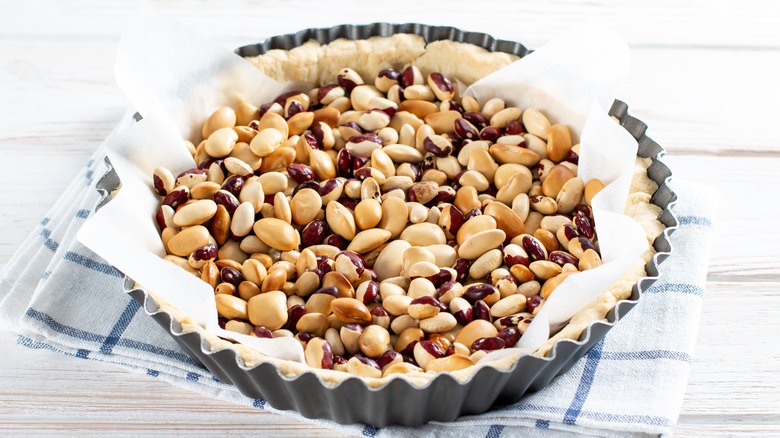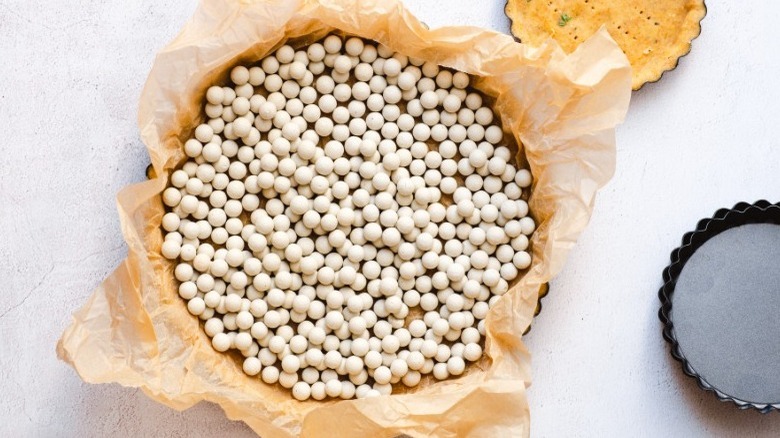The Pie Weight Mistake That's Causing Your Crust To Slump
As delicious as homemade pie is — and absolutely no one would say it isn't — let's be honest: This baking endeavor could be considered one of the home kitchen's more advanced feats. From carefully tempering the eggs in the lemon curd that lines the bottom of your lemon meringue pie to individually pitting the cherries that go into your cherry pie and many more time-consuming or fraught tasks, pie-baking can veer far beyond the relative simplicity of whipping together some cookies or a quick bread.
And of all the challenging aspects of making pie, creating a perfect, golden-brown, flaky crust can undeniably be one of the most difficult steps. All too often, pie crust turns out tough instead of flaky, under-baked and doughy, or burnt and bitter tasting. Making a great one seems to require so many steps, from chilling your butter thoroughly to pricking the bottom crust with a fork before filling it to using pie weights during the blind bake. And even if you've remembered that last step — using dried beans, rice, or even copper pennies — you may find that your pie crust still turns out weird, slumping down in the pan instead of maintaining well-defined sides.
Make sure to heap your pie weights all the way to the top of the pie plate
Do you know about pie weights? Used during the so-called blind baking of a bottom pie crust — typically employed for no-bake pies, whose filling isn't cooked at all, or for cream or custard pies as extra insurance from getting soggy — pie weights help keep an unfilled crust from bubbling up in the oven, keeping the crust neat and in place in the absence of a filling that would normally play this role.
Using pie weights is a pretty foolproof process, involving lining the raw crust with some parchment paper or aluminum foil and then heaping in either commercial pie weights — typically made from ceramic or aluminum — or using dried beans or rice that you've dedicated to the task. But if you're going to use weights, make sure to use plenty of them, covering not just the bottom of the pie plate, but well up its sides, too. If you don't, the buttery crust along the sides won't have any support as it heats and goes melty in the oven, and is liable to slip down from the sides of the pan as it cooks. You'll be left with uneven sides that won't be great at containing the filling — and who wants that?
So the next time a blind bake is in order, make sure you really go to town when filling the crust with weights.

